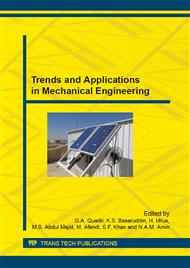p.79
p.84
p.89
p.94
p.99
p.105
p.111
p.116
p.121
Study of PWHT of EN-WB 36 Welded Material for High Pressure Application in Power Plants
Abstract:
The heat-resistant, copper-alloyed ferritic steel 15NiCuMoNb5 (EN-WB36, material number 1.6368) has been widely used in European nuclear and conventional power plants for decades for feed water system. This widespread application is due to the toughness and strength, caused by the precipitation of copper, that are exhibited even at elevated temperatures which other fine-grained structural steels have at room temperature. The common problem faced on the construction sites is the embrittlement due to Cu-rich precipitates and the high hardness in welded joints that affect the weld quality and the premature joint failure can occur in service. Weld hardness has close relationship with the strength and ductility of the welded structures. Hence it is important for any weld to achieve certain level of weld hardness. The aim of this study is to see the impact of the impact of post weld heat treatment (PWHT) on the welded joints of WB 36 and find the optimal PWHT conditions that will produce the required hardness to overcome the problem of embrittlement in the welded material. Samples of different thicknesses were welded, keeping all the parameters same, PWHT carried out with induction heating equipment, joints were radiographed for any defect, macro-etched to confirm complete fusion and joint free from crack, and the hardness values were measured in base metals, heat affected zones and weld metal. It was found out that the embrittlement of WB-36, due to Cu-rich precipitates and high hardness, in welded joints can be brought into the lower and safer limits by applying PWHT at 570 °C for 1 hour min. This, for sure, will reduce the risk of premature joint failure and will have, comparatively, safer weld joint.
Info:
Periodical:
Pages:
99-104
Citation:
Online since:
August 2015
Authors:
Price:
Сopyright:
© 2015 Trans Tech Publications Ltd. All Rights Reserved
Share:
Citation:


